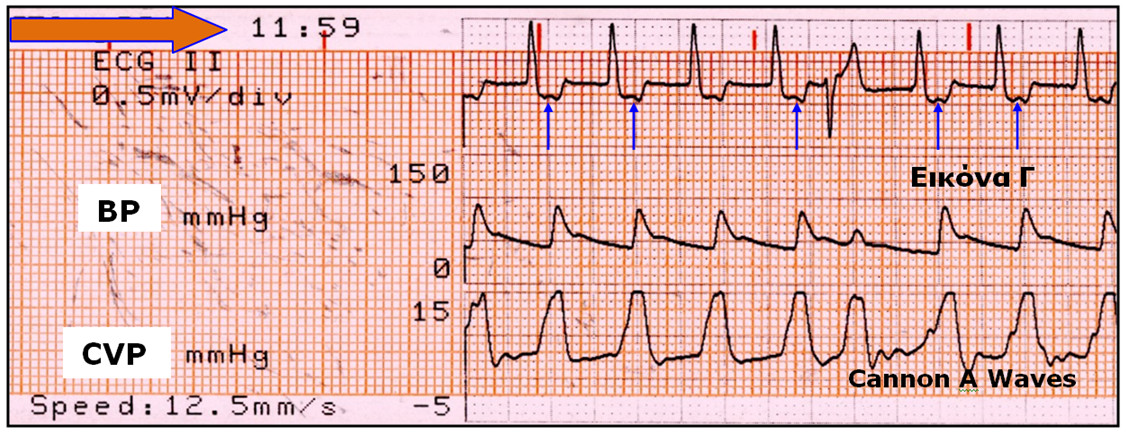

The deficiency of the natural heart pacemaker, the conduction disturbances and the appearance of arrhythmias are common complications after cardiac surgery. Placement of epicardiac electrodes (ventricular, atrial, or both) during cardiac surgery remains common practice, even though few patients will actually need some kind of temporary epicardiac pacing for various periods of time. Temporary epicardiac pacing may be ventricular, atrial or atrioventricular, depending on the specific features of each patient and it aims at preserving the cardiac rhythm, securing the desired heart rate and achieving an acceptable cardiac output. Temporary epicardiac pacing is not without danger, since, under specific circumstances, it may have a negative impact on the hemodynamics of the patient, to the point of circulatory collapse. It may also cause ventricular tachycardia (R on T phenomenon) and cardiac arrhythmias (if pacing is not synchronized to the heart’s natural pacemaker). Ventricular Pacing and Sensing (VVI) is accomplished by the placement of electrodes only on the ventricles, which a priori means a certain degree of hemodynamic compromise, due to the loss of atrial contribution in preserving cardiac output. In certain occasions, this impact may be even more significant. This case report concerns a patient who underwent Coronary Artery Bypass Grafting (CABG) and after placement of the electrodes of temporary epicardiac ventricular pacing he presented significant decrease in systemic arterial pressure and the appearance of cannon A waves on central venous pressure (CVP) tracing every time the pacemaker was triggered. These phenomena, which receded after the disconnection of the pacemaker, consists a case of Pacemaker Syndrome.This problem was solved by adjusting the pacemaker’s frequency at a rate lower than that of the patient’s natural pacemaker.
Continue reading






